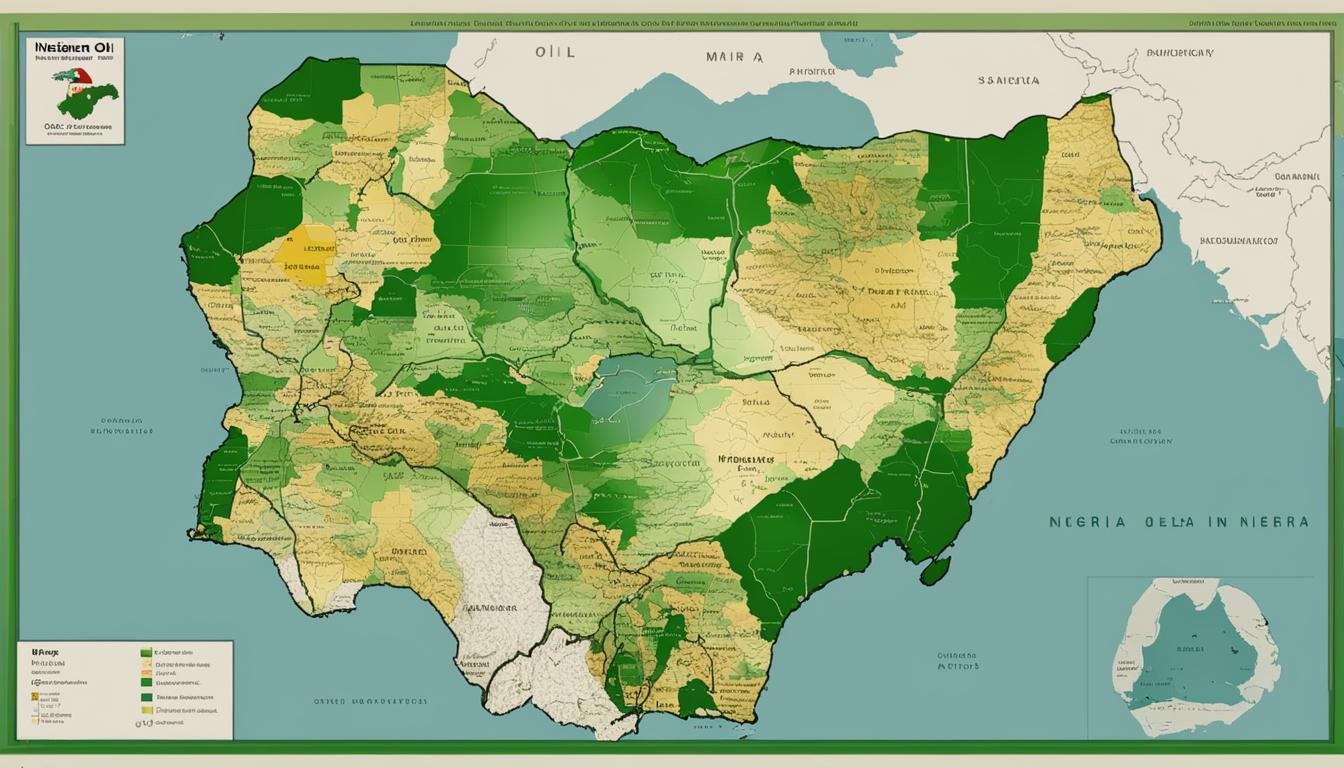Welcome to our in-depth exploration of the history of education in Nigeria. Education plays a crucial role in the development of any nation, and Nigeria is no exception. By understanding the roots, influences, and challenges faced by the Nigerian education system, we can gain valuable insights into the country’s educational journey and its impact on national development.
Key Takeaways:
- The history of education in Nigeria is a rich tapestry that includes indigenous practices, Islamic education, and the contributions of Christian missionaries.
- Colonial influence played a significant role in the expansion of formal education in Nigeria.
- Post-independence, Nigeria witnessed advancements in its education system, contributing to the country’s progress.
- The structural evolution of Nigeria’s educational system includes pre-independence and post-independence reforms.
- Challenges faced by Nigerian education include underfunding, management issues, and the response of technology and online learning initiatives to address them.
The Roots of Nigerian Education
Indigenous and Islamic Educational Foundations
In the early days of education in Nigeria, indigenous educational practices formed the foundation of learning. Indigenous knowledge was passed down from generation to generation, encompassing various aspects of life, including agriculture, craftsmanship, social norms, and spiritual beliefs. Traditional educational systems such as the “Ile-Ife model” and the “Almajiri system” played a crucial role in imparting knowledge and skills to young learners.
Islamic education also had a significant influence on the educational landscape in Nigeria. Islamic scholars established schools known as “Makarantar Allo” or “Qur’anic schools,” where students learned how to read, write, and recite the Qur’an. These schools provided religious instruction and contributed to the overall intellectual development of the students.
Christian Missionaries’ Contribution and the Methodist School
The arrival of Christian missionaries in Nigeria brought forth a new era of education. The missionaries, driven by their religious beliefs, established schools throughout the country, introducing Western education to the indigenous population.
One notable contribution was made by the Methodist Church. In 1842, the first Methodist school was established in Badagry, Nigeria. This school, known as the “Cathedral Primary School,” laid the groundwork for modern education in the country. The Methodist Church continued to play a significant role in the growth and development of education in Nigeria, establishing numerous schools and promoting literacy and moral values among the population.
Colonial Influence and the Expansion of Formal Education
With the onset of colonialism, formal education gained prominence in Nigeria. The British colonial government introduced a centralized educational system that aimed to produce literate individuals capable of serving as intermediaries between the colonial administration and the local population.
Under colonial rule, missionary schools, including the Methodist schools, flourished and became integral in providing education to both Christians and non-Christians. These schools played a crucial role in expanding the reach of formal education in Nigeria, paving the way for the establishment of more schools and educational institutions across the country.
| Educational Foundations | Key Contributions |
|---|---|
| Indigenous Education | Preservation of indigenous knowledge and skills through traditional educational systems |
| Islamic Education | Teaching religious instruction and fostering intellectual development through “Makarantar Allo” or Qur’anic schools |
| Christian Missionaries | Introduction of Western education, establishment of schools, and promotion of literacy and moral values |
| Methodist School | Foundation of modern education in Nigeria, establishment of numerous schools, and training of educators |
| Colonial Influence | Introduction of a centralized educational system and the expansion of formal education through missionary schools |
History of Education in Nigeria and Post-Colonial Expansion
In the wake of Nigeria’s independence in 1960, the country witnessed significant developments in its education system. Post-independence, education emerged as a crucial tool for driving the country’s development and progress. With a focus on expanding access to quality education, Nigeria took significant steps to enhance its educational infrastructure and promote educational advancements.
During this period, the Nigerian government recognized the critical role of education in fostering socio-economic growth. Efforts were made to establish new schools, improve existing educational institutions, and increase enrollment rates across all levels of education.
These educational developments were aimed at equipping Nigerian citizens with the knowledge and skills necessary to contribute meaningfully to the nation’s development and meet the increasingly complex demands of a rapidly changing world.
The expansion and advancements in Nigeria’s educational system during this era played a pivotal role in shaping the country’s growth trajectory. Education became a catalyst for economic development, social cohesion, and empowerment of individuals and communities.
Furthermore, educational developments in Nigeria post-independence sought to address the previous disparities that existed in access to education. Efforts were made to promote inclusivity and ensure that education was accessible to all Nigerian citizens, regardless of their socioeconomic backgrounds or geographical location.
Through these initiatives, Nigeria witnessed a significant increase in school enrollment rates, literacy levels, and educational attainment over the years. The commitment to education as a means of driving national development remains a priority in contemporary Nigeria, with ongoing efforts to address the remaining challenges and promote continuous improvement in the education system.
Structural Evolution of Nigeria’s Educational System
In this section, we will delve into the structural evolution of Nigeria’s educational system. We will examine the pre-independence and early post-independence reforms that shaped the system. Additionally, we will explore the introduction of the Universal Basic Education (UBE) Program and the transition from the 6-3-3-4 to the 9-3-4 educational structure.
Pre-Independence and Early Post-Independence Reforms
During the pre-independence era, education in Nigeria was primarily provided by religious and indigenous institutions. However, with the arrival of colonial powers, significant changes were introduced to the educational system. The colonial administration focused on providing Western-style education to Nigerian youth, emphasizing subjects that catered to the needs of the colonial administration.
After gaining independence in 1960, Nigeria underwent a series of educational reforms. These reforms aimed to nationalize the education system and promote cultural identity while maintaining the standards set by Western education. The government implemented policies to enhance access to education and improve the quality of teaching and learning.
Introduction of the Universal Basic Education (UBE) Program
In 1999, the Nigerian government introduced the Universal Basic Education (UBE) Program. This program aimed to provide free, compulsory, and quality education for all children between the ages of 6 and 15. The UBE program focuses on expanding access to basic education and ensuring the development of essential skills and competencies needed for lifelong learning.
The UBE program encompasses nine years of formal schooling, comprising of six years of primary education and three years of junior secondary education. It emphasizes the acquisition of literacy, numeracy, and life skills to equip students for further education or gainful employment.
Transition from 6-3-3-4 to 9-3-4 Educational Structure
In 2004, Nigeria transitioned from the 6-3-3-4 educational structure to the 9-3-4 system. The 6-3-3-4 structure consisted of six years of primary education, three years of junior secondary education, three years of senior secondary education, and four years of tertiary education.
Under the 9-3-4 system, the duration of senior secondary education was extended to four years, providing a more comprehensive and focused curriculum. This change aimed to align the educational system with international standards, promote specialization, and better prepare students for higher education or vocational training.
The transition to the 9-3-4 educational structure brought about significant improvements in curriculum development and instructional delivery. It sought to equip students with relevant skills and knowledge to meet the demands of a rapidly changing global economy.
In conclusion, the structural evolution of Nigeria’s educational system has been shaped by pre-independence reforms, post-independence changes, the introduction of the Universal Basic Education (UBE) Program, and the transition to the 9-3-4 educational structure. These reforms reflect Nigeria’s commitment to providing accessible and quality education to its citizens, ensuring their holistic development and contribution to the nation’s growth and prosperity.
Modern Challenges and Innovations in Nigerian Education
In order to address the evolving needs of Nigerian education, it is essential to understand the modern challenges faced by the system and explore innovative solutions. This section will discuss two significant challenges: the impact of underfunding and management issues, and the role of technology and online learning initiatives. Additionally, we will examine the responses of the government and private sector in meeting the educational needs of the country.
Impact of Underfunding and Management Issues
One of the primary challenges in Nigerian education is the persistent issue of underfunding. Limited financial resources translate into inadequate infrastructure, insufficient learning materials, and low teacher salaries. These factors hinder the overall quality of education and limit opportunities for students. Furthermore, mismanagement and corruption within the education system exacerbate these challenges, hindering progress and equitable access to education.
To address these issues and ensure quality education for all, it is crucial for the government to prioritize the allocation of adequate funds to the education sector. Additionally, implementing transparent and accountable management systems can help prevent the misappropriation of funds and ensure efficient utilization of available resources.
The Role of Technology and Online Learning Initiatives
The rapid advancement of technology has the potential to revolutionize education in Nigeria. Access to digital tools and online learning platforms can bridge the gap between urban and rural areas, expand access to quality education, and enhance learning outcomes. Technology also enables personalized learning experiences, interactive teaching methods, and remote education, which have become even more crucial in light of the COVID-19 pandemic.
Online learning initiatives, such as Massive Open Online Courses (MOOCs) and virtual classrooms, provide opportunities for students to access high-quality educational content from renowned institutions and experts. These initiatives can supplement traditional classroom education and improve the overall learning experience and flexibility.
Government and Private Sector Responses to Educational Needs
Recognizing the importance of addressing the challenges in Nigerian education, both the government and private sector have taken steps to implement reforms and initiatives. The government has introduced educational reforms aimed at improving the quality of education, such as curriculum updates, teacher training programs, and the Universal Basic Education (UBE) Program. The UBE program focuses on ensuring nine years of uninterrupted education for every child in Nigeria.
Additionally, the private sector has played a significant role in complementing government efforts through partnerships and investments in education. Private companies and organizations have established scholarship programs, sponsored infrastructure projects, and supported the implementation of technology-driven solutions.
In conclusion, addressing the challenges in Nigerian education requires a multidimensional approach that tackles issues of underfunding, mismanagement, and leverages technology and online learning initiatives. Collaborative efforts between the government, private sector, and other key stakeholders are essential to drive educational reforms and ensure the development of a robust and inclusive educational system in Nigeria.
Conclusion
In conclusion, the Nigerian education system has witnessed significant achievements throughout its history, playing a crucial role in the country’s overall development. From its roots in indigenous and Islamic educational practices to the contributions of Christian missionaries and the influence of colonialism, education in Nigeria has evolved and expanded over time.
Looking to the future, there are exciting possibilities for the Nigerian education system. As the country continues to navigate the challenges of the modern era, efforts for educational reforms remain ongoing. With a focus on addressing underfunding and management issues, embracing technology and online learning initiatives, and fostering collaboration between the government and the private sector, the Nigerian education system can continue to adapt and improve to meet the changing needs of the nation.
It is imperative that the achievements of the past serve as a foundation for future progress. By recognizing the successes of the Nigerian education system and building upon them, the country can ensure a brighter and more inclusive future for all its citizens. With continuous efforts towards educational reforms and a commitment to providing quality education to every individual, Nigeria can strive towards a future where education becomes a powerful catalyst for social and economic development.
FAQ
What is the history of education in Nigeria?
The history of education in Nigeria dates back to pre-colonial times, where indigenous and Islamic educational practices were prevalent. Formal education was later introduced by Christian missionaries, with the establishment of schools such as the Methodist school. The expansion of education in Nigeria significantly accelerated during the colonial era.
How has education in Nigeria evolved post-independence?
After gaining independence, education played a crucial role in shaping Nigeria’s development. The country witnessed an expansion and advancement in its educational system, resulting in increased access to education for its citizens.
What are the challenges faced by the Nigerian education system?
The Nigerian education system faces various challenges, including underfunding, inadequate infrastructure, teacher shortages, and management issues. These challenges have hindered the quality of education and limited the opportunities available to students.
How has technology impacted education in Nigeria?
Technology has played a significant role in addressing some of the challenges in the Nigerian education system. Online learning initiatives and the integration of technology in classrooms have improved access to education and provided new learning opportunities for students.
How is the government addressing the educational needs of Nigeria?
The Nigerian government, along with the private sector, has implemented various measures to address the educational needs of the country. Efforts include increasing funding for education, improving infrastructure, and implementing educational reforms to enhance the quality of education.
What are the achievements of the Nigerian education system?
The Nigerian education system has achieved significant milestones over the years. It has educated millions of students, helping to develop a skilled workforce and contributing to the country’s overall development. However, there is still room for improvement and ongoing efforts for educational reforms.




![Saudi Oil Industry Key Stats Unveiled [2024] 3 Saudi Oil Industry Key Stats](https://zoets.b-cdn.net/wp-content/uploads/2024/02/h.jpg)






